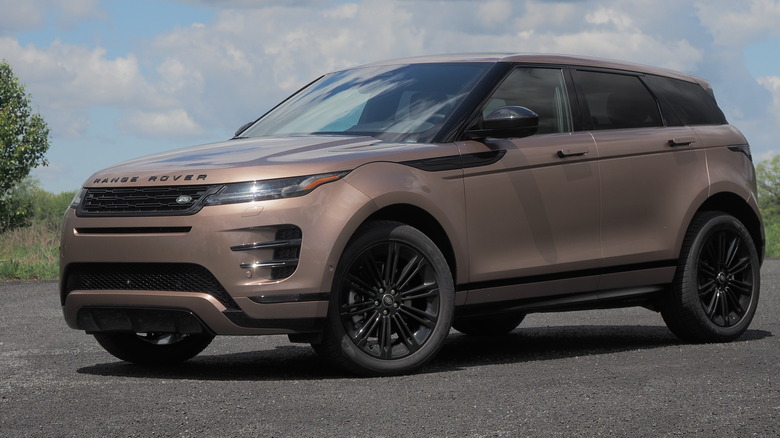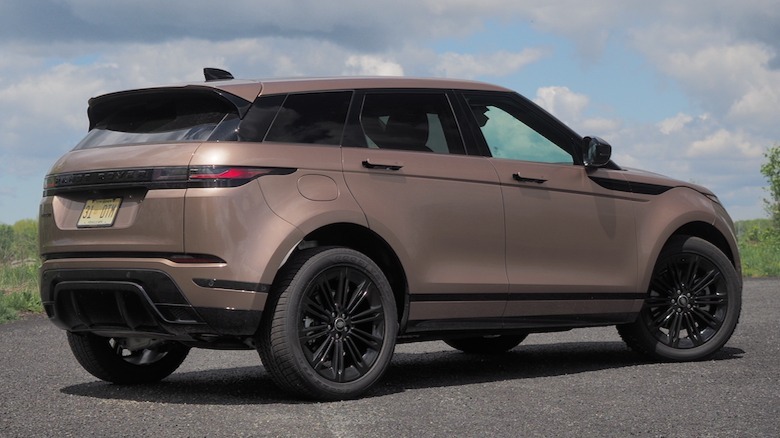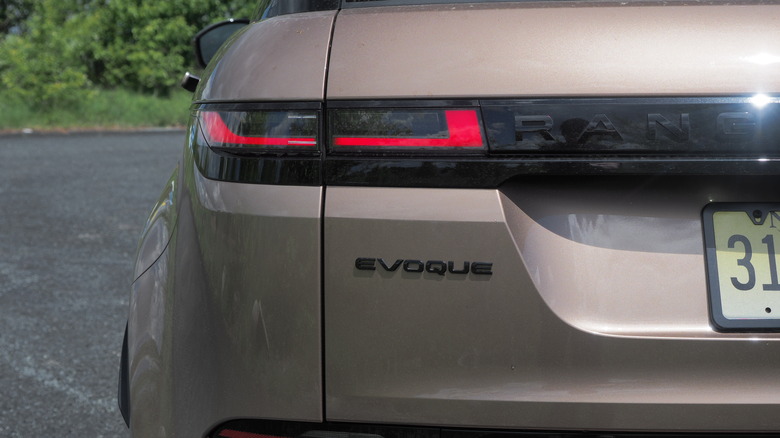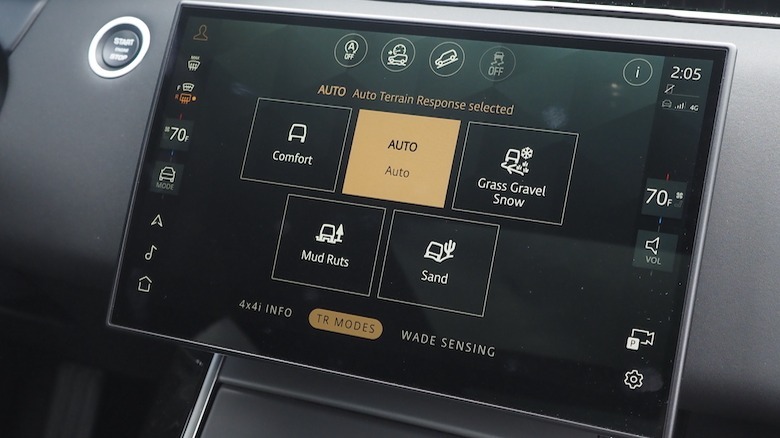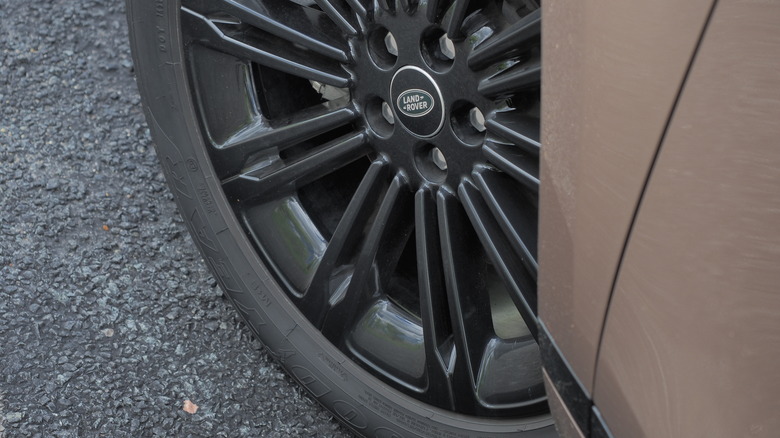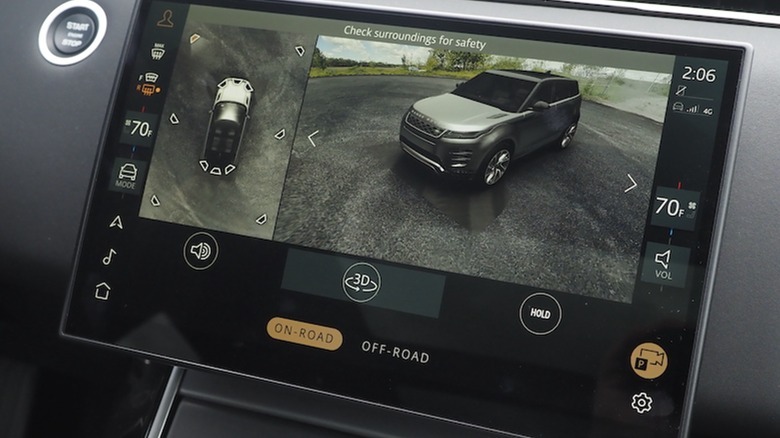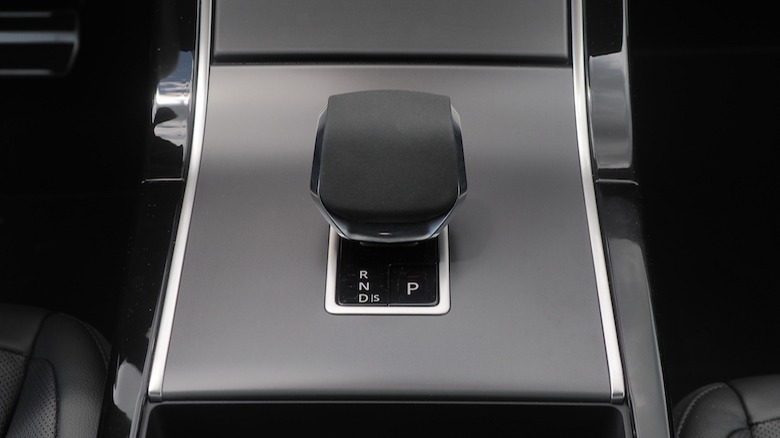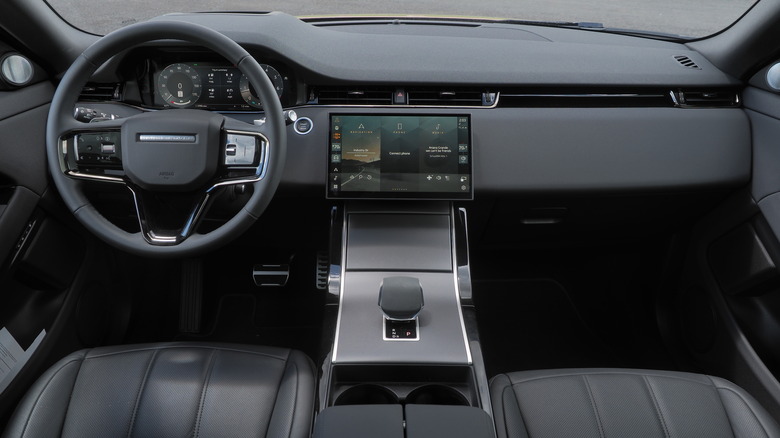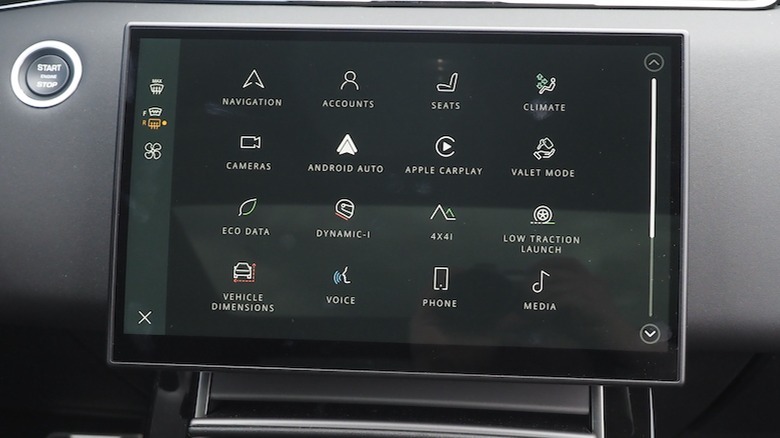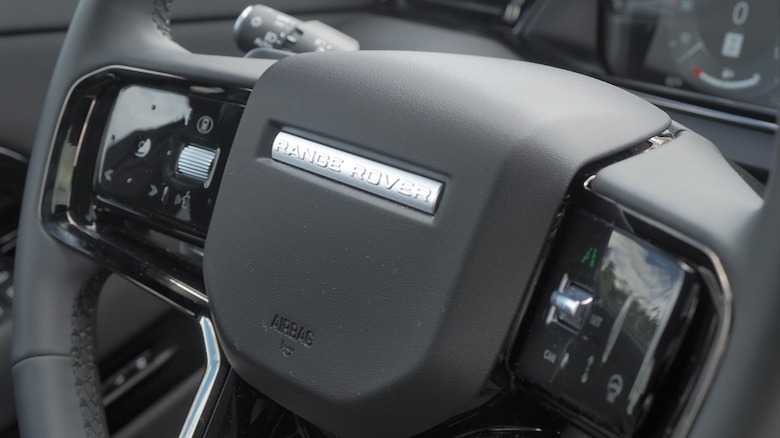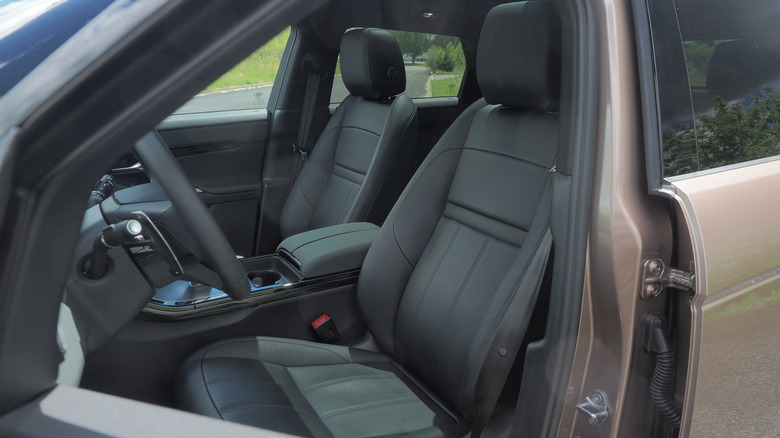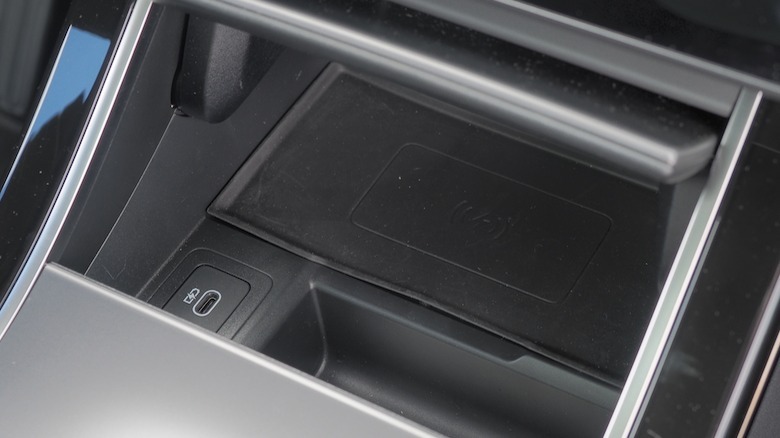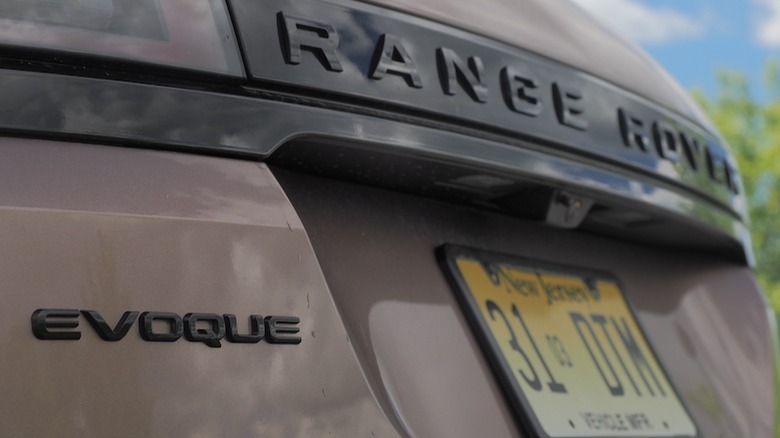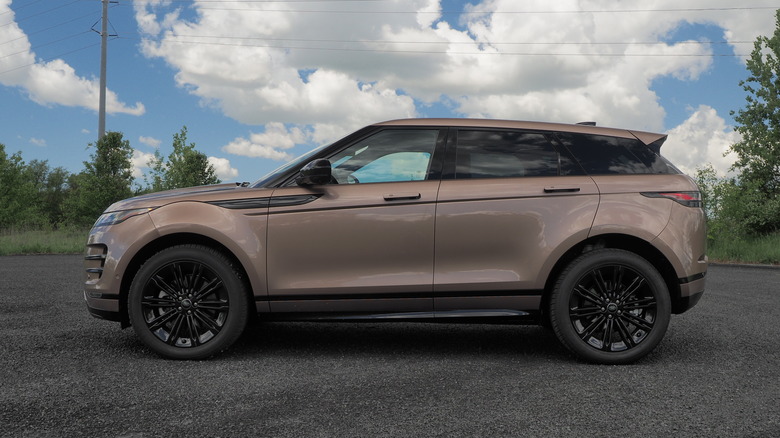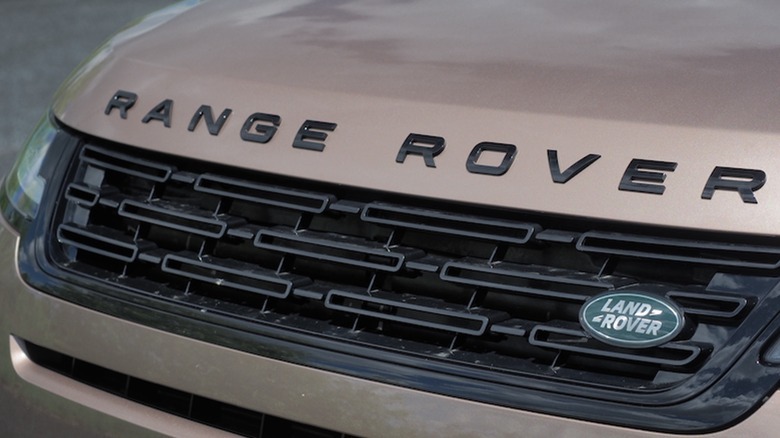2024 Range Rover Evoque Review: Real Luxury Off-Roader Comes With Compromises
- Handsome styling
- Well-equipped even in base spec
- Genuine off-road ability (on the right wheels)
- 2.0L Turbo engine lacks refinement when pushed
- Rear seats and trunk are snug versus rivals
- Higher trim and options get expensive
Much like with voting and choosing the right size portion of ice-cream, when buying a new car it's easy to make decisions counter to your own best interests. What the heart desires is not always what's most practical, something the 2024 Range Rover Evoque illustrates amply. In the fiercely competitive small luxury SUV set, spec is everything.
Time has been kind to the Evoque's design, and though the compact crossover may not look quite as unusual as when it first launched in 2011, the Velar-inspired 2018 refresh smoothed things out nicely. It's a chunky, pinched wedge of an SUV, made less fussy with its simplified grille and smoother flanks. Pop-out door handles are still mistrusted by some, but Range Rover's beefy versions are a glimpse of its bigger siblings' general heft.
Pricing kicks off at $49,900 (plus $1,175 destination) for the 2024 Evoque S, rising to $54,900 (plus destination) for the Dynamic SE trim. The well-equipped example you see here landed at a hefty $62,815 all-in.
One engine, lots of modes
There's a single drivetrain option for the 2024 Evoque in the U.S., the P250 2.0-liter turbocharged gas engine paired with a 9-speed automatic transmission and all-wheel drive. It means 246 horsepower and 269 lb-ft of torque, good for a quoted 7.0 second 0-60 mph time. Top speed is 143 mph.
It's sad not to see a plug-in hybrid option, and equally sad that the 2.0-liter turbo isn't as refined as engines in Range Rover's more expensive models. For ambling around town it's fine, but push on more aggressively and the gas engine sounds harsh while the transmission can struggle to decide on a gear. Tugging the transmission shifter back, to put the gearbox into Sport mode, can help with perkiness, but only because it encourages the Evoque to hold lower gears (and thus things tend to stay louder).
The flip side is Range Rover's (deserved) reputation for off-road talent. While the Evoque may be smaller than the Defender, it still gets permanent all-wheel drive, the Terrain Response 2 system with various on- and off-road drive modes, brake-based torque vectoring, and All-Terrain Progress Control. As well as an Auto mode, which leaves the Evoque to figure things out for itself, there are dedicated Comfort, Grass/Gravel/Snow, Mud Ruts, and Sand modes, plus wade-sensing.
Dressed for the streets
In addition to the usual reversing camera view, Range Rover also throws in off-road specific pages. That includes special low-level views through the exterior cameras, plus readouts for altitude, bearing, tilt/incline, and more. There's a low-traction launch mode for escaping muddy or slippery situations, and hill descent control for making steep inclines easier.
That's all grand, but with optional 20-inch gloss black wheels (replacing, for $800, the Dynamic SE's standard 19-inch alloys) on this particular Evoque, it's tough to imagine wanting to risk the rims, the $950 Corinthian Bronze paintwork, or the $750 Black Pack trim by roaming too far off asphalt.
Making more sense, maybe, is the $1,050 Dynamic Handling Pack. That includes the vague-sounding "Configurable Dynamics" and "Adaptive Dynamics" which basically means adaptive suspension (firmer for sportier driving, softer for comfort) and the ability to tweak that plus steering, engine, and transmission behavior. Honestly, they're features the Evoque probably should have as standard: even in Comfort mode, the large wheels and narrow tires make for a fairly stiff ride.
Premium touches in otherwise barren fields
The Evoque's cabin has a smattering of thoughtful and premium touch points, which only serve to highlight the odd decisions elsewhere. The steering wheel paddles, for example, are beautifully-hewn chunks of satin chrome; they tinkle expensively when you tap your nails against them. The seats are comfortable and supportive, while the 11.4-inch center touchscreen is bright and charmingly curved.
It makes the decision to surround the dinky transmission shifter (which doesn't come anywhere close to the quality feel of the paddles) with a featureless swathe of blank plastic all the weirder. Especially since Range Rover could really have done with moving some of the commonly-accessed features out from the touchscreen. Locating the Evoque's drive modes requires swiping out a shortcut menu, for instance; changing media volume demands a swipe up or down the screen.
Despite what the spartan panels might imply, the Evoque's cabin is actually well-equipped even in base "S" trim. Heating for the front seats and steering wheel, a Meridian sound system, leather seats, wireless phone charging, a sliding panoramic glass roof, power liftgate, parking sensors, and dual-zone climate control are all standard, along with that big infotainment touchscreen with wireless Apple CarPlay and Android Auto, and a fully digital driver's display.
Fine in the front, snug in the rear
The Technology Pack is a $1,400 option, adding a video rear-view mirror, head-up display, and — most useful, given the narrow glass — a 360-degree camera. $450 upgrades the audio to Meridian's surround sound version, and $980 adds the Cold Climate Pack with its headlamp washers, heating for the windshield and washer jets, and heated rear seats. It's a small nod to improving the life of those dispatched to the second row.
Range Rover retired the three-door Evoque (and the love-it-or-hate-it convertible version), which made sense because of how poorly it sold, but don't assume that means the standard five-door crossover is spacious in the rear. In fact, back bench accommodations could be the biggest argument against the SUV, unless you're mainly transporting children. It's cramped, and the combination of narrow side glass with a standard privacy tint makes it feel even more confined.
The 21.6 cu-ft of trunk space — expanding to 50.5 cu-ft with the rear bench folded — is on the low side, too. An Audi Q3 offers 23.7 cu-ft; the BMW X2 nudges that up to 25.3 cu-ft. The Range Rover's fuel economy isn't all that great, either: the EPA says 20 mpg in the city, 27 mpg on the highway, and 22 mpg combined. Those are very optimistic figures, compared to reality landing several points lower.
2024 Range Rover Evoque Verdict
As with any car purchase — and with luxury models in particular — practicality often takes a backseat to vibes. You can know a certain model might lag in fuel economy, or cabin space, but your heart is set on it nonetheless. On that front, I can absolutely see the Range Rover Evoque's allure.
A Mercedes GLA or GLB could have more obvious brand-prestige, then, while a BMW X2 will drive more enthusiastically. MINI's new Cooper Countryman is spacious and more distinctive. Yet none quite captures that blend of distinctively British luxe: the sense that the Evoque driver is simply gadding about in-between garden parties, visiting the stables, and dabbling in the occasional evening debauchery.
Is it the smoothest in its class, or the most economical, or capacious? No, but with the right wheel and tire set I'd feel a lot happier venturing off the road in the Evoque than in any of its competitors. More here than with most new car purchases, getting the spec just right makes the difference between the Range Rover shining, versus feeling like an expensive confusion.
